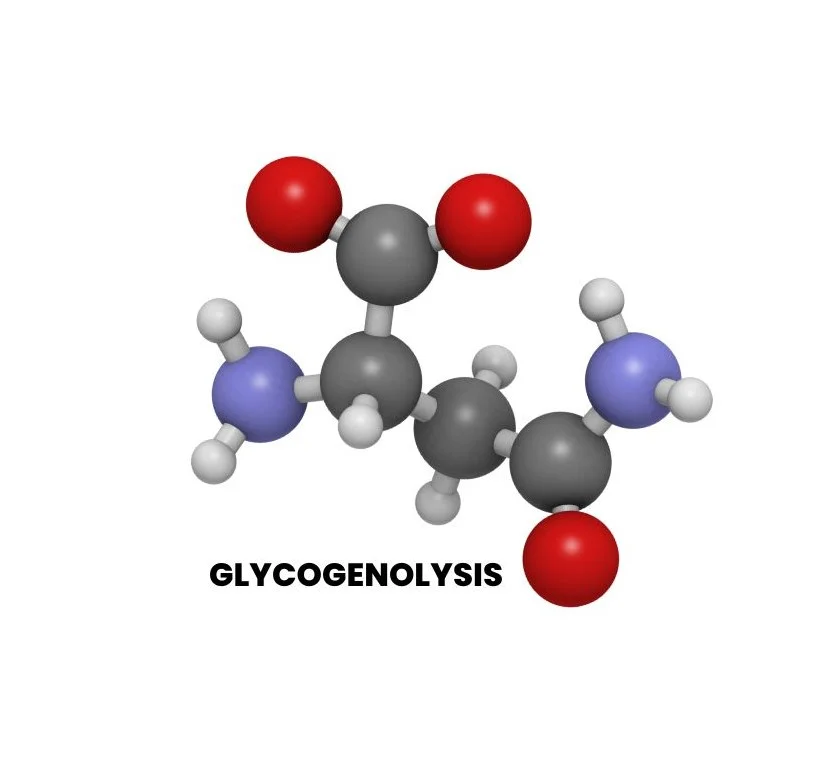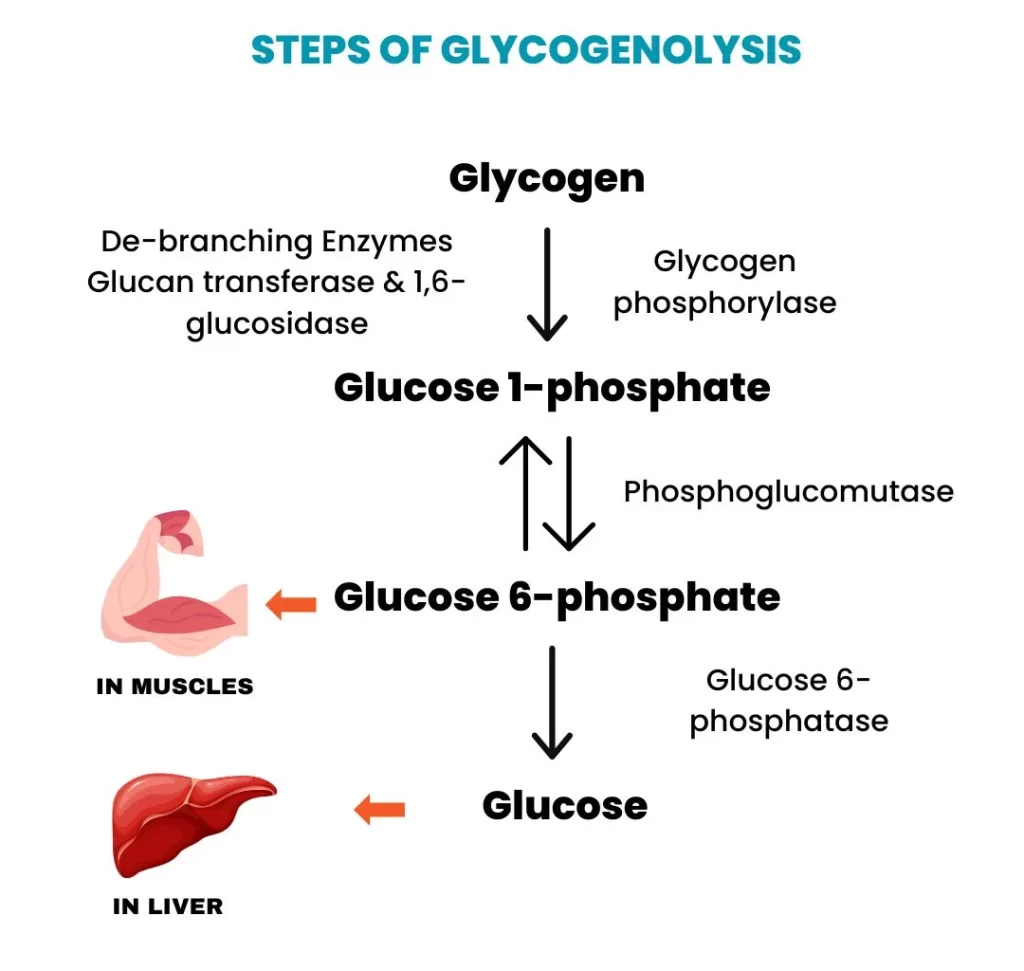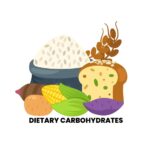
Glycogenolysis is a process in which a glycogen molecule breaks down into individual molecule of Glucose.
Glycogen, a polysaccharide composed of glucose units which is a major storage form of carbohydrates in animals plays an important role in regulating blood glucose levels and serving as an energy reservoir.
WHAT IS NORMAL BLOOD GLUCOSE LEVEL?
This process takes place in Liver and Muscles to provide an immediate source of energy specially during fasting.
Understanding the dynamic processes of glycogenesis and glycogenolysis is crucial for medical students to grasp the intricacies of metabolic regulation.
Let us delve into the details of these processes and highlight key points suitable for exam preparation.
GLYCOGENOLYSIS: THE BREAKDOWN

Introduction to Glycogenolysis
Glycogenolysis involves the breakdown of glycogen into glucose-1-phosphate and glucose. It is a distinct pathway, not merely the reverse of glycogenesis.
- Phosphorolytic Cleavage:
- Glycogen phosphorylase (an enzyme) breaks (catalyzes) the phosphorolytic cleavage of α-1,4-glycosidic bonds of glycogen to give glucose-1-phosphate and residual 4 glycogen molecule.
- This enzyme (glycogen phosphorylase) plays a pivotal role in initiating glycogenolysis.
- Debranching Enzyme:
- To continue phosphorolysis, the branch must be removed.
- It has two catalytic activities by glucan transferase and 1,6-glucosidase (debranching enzymes).
The combined action of glycogen phosphorylase and two debranching enzymes leads to complete breakdown of glycogen with formation of glucose-1-phosphate and free glucose.
- Conversion to Glucose-6-Phosphate:
- Glucose-1-phosphate is converted to glucose-6-phosphate by phosphoglucomutase.
- This step is reversible, allowing flexibility in glucose utilization.
- Tissue-Specific Glucose Release:
- In the liver, glucose-6-phosphatase converts glucose-6-phosphate to glucose, which can then be released into the bloodstream.
- Muscle lacks glucose-6-phosphatase, preventing glucose release, but facilitates intramuscular glucose utilization.
Importance Of Glycogen Metabolism: Tissue-Specific Functions
In the Liver:
- Glycogenesis: After a meal, excess glucose is stored as glycogen, preventing hyperglycaemia.
- Glycogenolysis: Between meals, the liver releases glucose to maintain blood glucose levels, preventing hypoglycaemia.
In Muscles:
- Muscle Glycogen as an Energy Source: During muscle contraction, glycogen provides a rapid source of glucose exclusively for muscle metabolism.
- Isolation from Bloodstream: Absence of glucose-6-phosphatase in muscles prevents glucose release into the bloodstream.
FREQUENTLY ASKED QUESTIONS
- What is the primary enzyme involved in glycogenolysis?
- Glycogen phosphorylase initiates the breakdown of glycogen.
- How does debranching enzyme contribute to glycogenolysis?
- Debranching enzyme facilitates the removal of branches during phosphorolysis.
- Why cannot muscles release glucose into the blood during glycogenolysis?
- Muscles lack glucose-6-phosphatase, preventing the conversion of glucose-6-phosphate to free glucose.
- What role does phosphoglucomutase play in glycogenolysis?
- Phosphoglucomutase converts glucose-1-phosphate to glucose-6-phosphate, a reversible step in the process.
- How does liver glycogen prevent hyperglycaemia?
- After a meal, excess glucose is stored as glycogen through the process of glycogenesis.
- Why is glucose release crucial during glycogenolysis in the liver?
- It prevents hypoglycaemia between meals by maintaining blood glucose levels.
- What differentiates muscle glycogen utilization from liver glycogen?
- Muscle glycogen is exclusively used by muscles, whereas liver glycogen contributes to systemic blood glucose levels.
- Which enzyme allows glucose release from the liver into the bloodstream?
- Glucose-6-phosphatase facilitates the conversion of glucose-6-phosphate to free glucose in the liver.
- Why is glycogenolysis considered a separate pathway from glycogenesis?
- While both involve glycogen, glycogenolysis has unique enzymatic steps and goals distinct from glycogenesis.
- How does the absence of glucose-6-phosphatase impact glucose metabolism in muscles?
- Muscles cannot release free glucose into the bloodstream, utilizing glycogen exclusively for intramuscular energy needs.
This comprehensive overview provides a detailed understanding of glycogen metabolism.













Leave a Reply